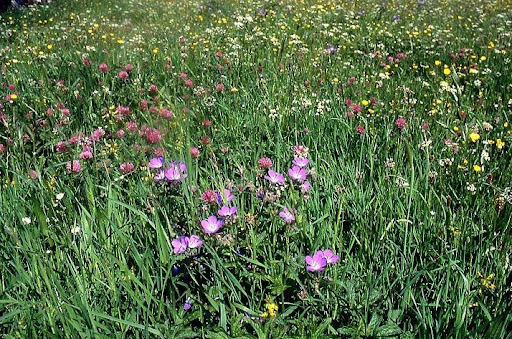
Author: Kevin Rylands, Fair to Nature Advisory Development Officer
Field margins are often the lowest yielding areas of a field so inputs here may not be delivering positive results. But what about your financial margins? Are you chasing yields in these poorer areas? If so, your margins may well be in the red.
However, there are a number of nature friendly solutions that can help move your margins into the black and be alive with colour.
Wildflower margins can be used to buffer ponds, hedgerows and other sensitive habitats and also help provide natural corridors through the landscape. These provide shelter for a range of beneficial invertebrates as well as vital pollen and nectar resources, if the grass component doesn’t become too dense.
Existing grass margins can be improved by seeding with flowering plants such as knapweeds, yarrow, ox-eye daisy, bird’s foot trefoil and sainfoin. Soils with low fertility and phosphorous are most suitable for this option, so any cuttings need to be removed, or used to create a habitat pile. Areas of high nutrient status can also be beneficial, nettles for example are a key food plant for many species including butterflies and provide great nesting cover for partridges, but it is unlikely to be worth adding flowering plants in such locations.
Whilst field margins are often thought of as a feature of arable land, this doesn’t have to be the case. Areas of intensive grassland can also have wildlife friendly margins, be that areas that are fenced off alongside watercourses or managed alongside the rest of the field.
In fields that are managed solely for grazing, especially sheep, the challenge is to maintain areas of flowering plants without shutting off the field, but although fencing margins may not be practical, it might be more convenient to fence off a field corner. In cropped grass fields there are a number of options that can be considered.
The simplest and perhaps most cost effective is to stop fertilising the boundaries of these fields. This will remove some of the competitive advantage of the existing sward and allow other species to appear. These areas can then be left uncut when the remainder of the field is harvested, and aftermath grazing across the whole field can follow the last cut.
Once a grass ley has reached the end of its productive life and is due to be reseeded, this is the ideal time to consider your margins. Will the field perform better with a multispecies sward based on legumes that reduce the need for Nitrogen inputs and herbs that provide nutritional and health benefits for stock, soil and nature?
If not the whole field, you can also consider either putting a different seed mix in margins, allowing margin vegetation to re-establish naturally or not cultivating margins, saving energy and carbon by retaining the old sward.
Chicory and sainfoin both provide anthelmintic benefits as well as being having drought resistant properties with deep tap roots allowing them to reach moisture whilst improving soil structure. Sainfoin also helps fix nitrogen, as does bird’s-foot trefoil, which in addition to its health benefits for stock also helps reduce their methane emissions, all this whilst being fantastic for bees and butterflies and over 120 species of invertebrate. A win-win for farming and nature.
These are lots of ways to provide more flowering plants for pollinators and other beneficial wildlife on livestock farms, whether infield or at the margins.
For more information on managing grass margins please visit the Farmwildlife website.
TOMORROW
IS GROWN FROM OUR ACTIONS TODAY
Contact us today to find out how you can become part of the solution.
Register Interest
Sidebar form
or email us at fairtonature@rspb.org.uk
